Honey Bee forages wax on Leaves of the Cedar tree. White Wax foraged by honey bee on cedar leaves, photos of bees pollen basket filled with white wax.
Honey Bee forages wax on Leaves
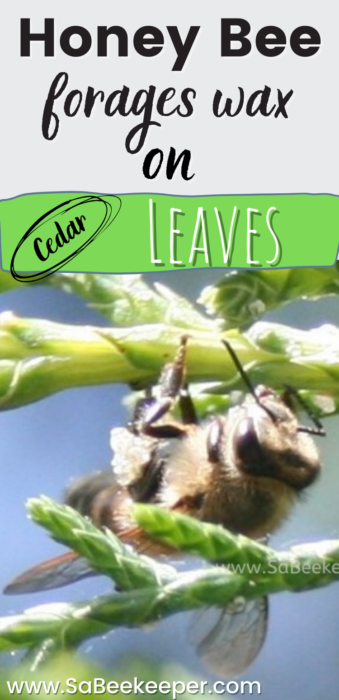
Cedar Tree Information.
A cedar tree is a evergreen tree, (belongs to the family of pines). Its needle like leaves are tightly packed in spiral clusters on the small branches. Colors of the leaves are light to dark green, which are covered by a thick layer of white wax.
Note on the photo below the specks of white wax on the stems and leaves of the cedar tree.
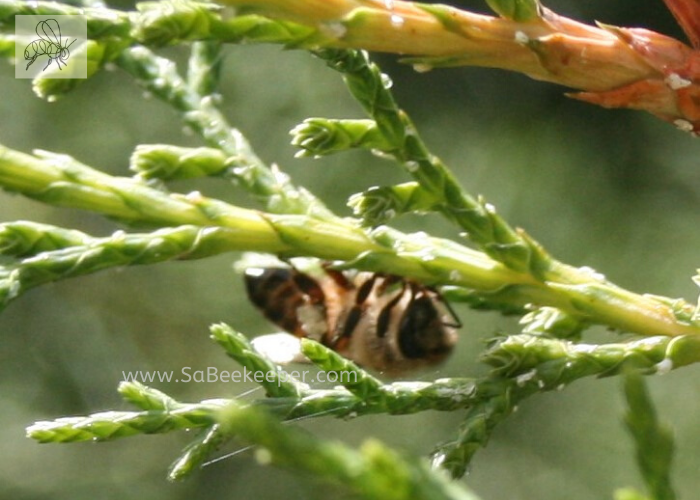
This prevents the leaves from losing water.
The tree produces cones and small flower like cones were noticed but does not produce pollen.
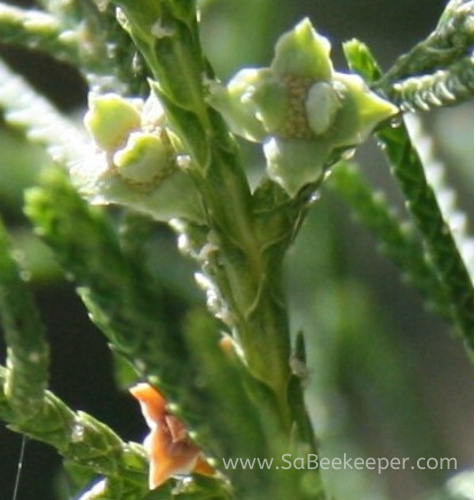
Mature cones are seen in the photo below.
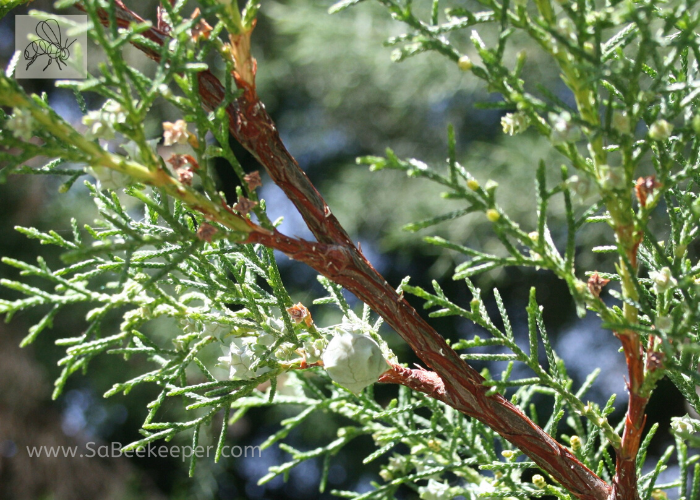
A repellent.
“Insect-repelling properties of cedar are appreciated in the industry of furniture. Closets made of cedar are moth-free. Wood of cedar is also used for the manufacture of shoe trees because it absorbs moisture and neutralize unpleasant smell.” more info here.
The cedar tree producers resin on the bark, as well as sap, with white wax on the leaves as well.
Foraging honey bee on cedar leaves.
These tiny flower like cones were on our cedar tree.
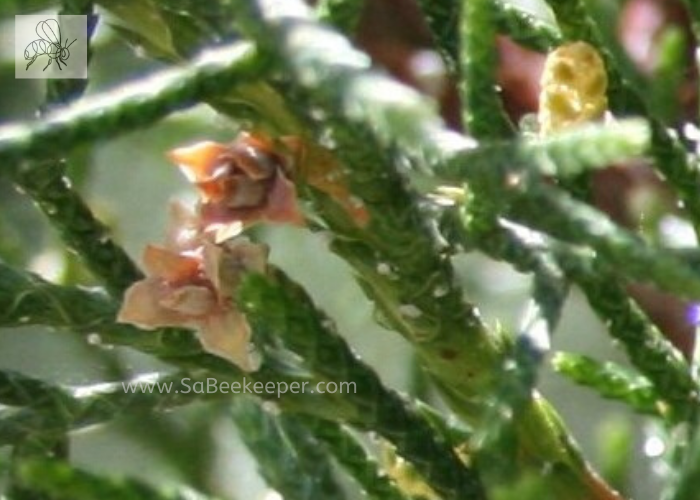
A honey bee came and started to forage the white wax. Collecting the wax in pollen baskets and eating it as well.
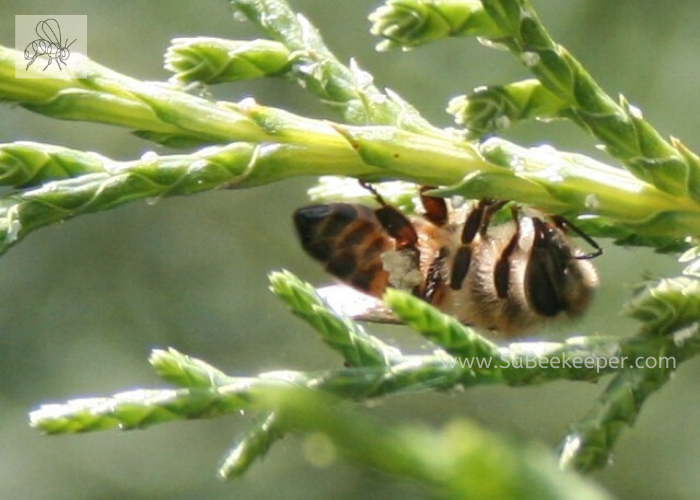
Can only think that the honey bee will make a propolis out of this wax as it will repel any moths or insects from its hive.
Below photo shows the white wax like collection in the bees pollen basket.
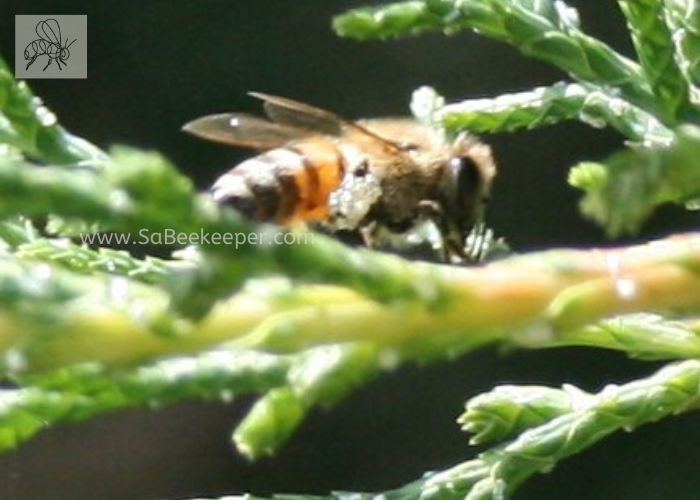
Propolis.
Propolis is made by bees to use for the closing up of holes and gaps in the bee hives. Orchard bees use propolis to seal their cells in their nests.
Such clever insects, as this propolis will protect the cells and the beehives from any insects.
Very Busy honey bee foraging on the cedar leaves for wax.
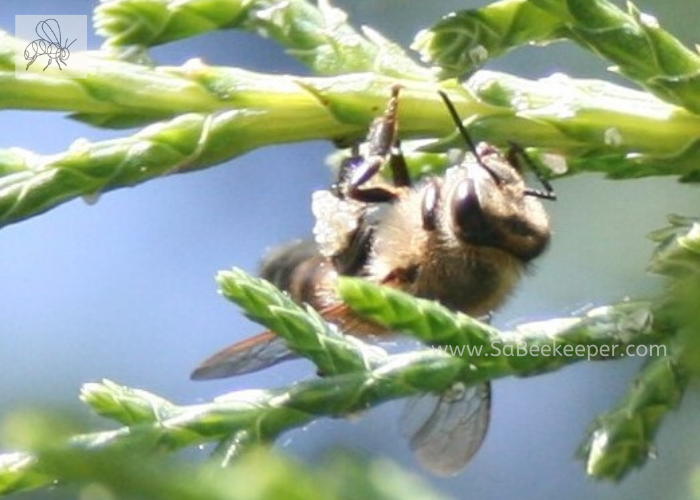
Wax on the cedar leaves.
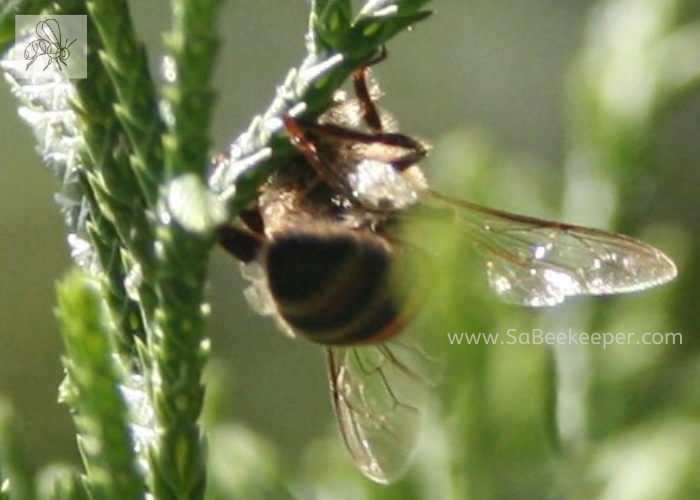
The two bees were busy and wax seems to be on the leaves at certain times of the day.
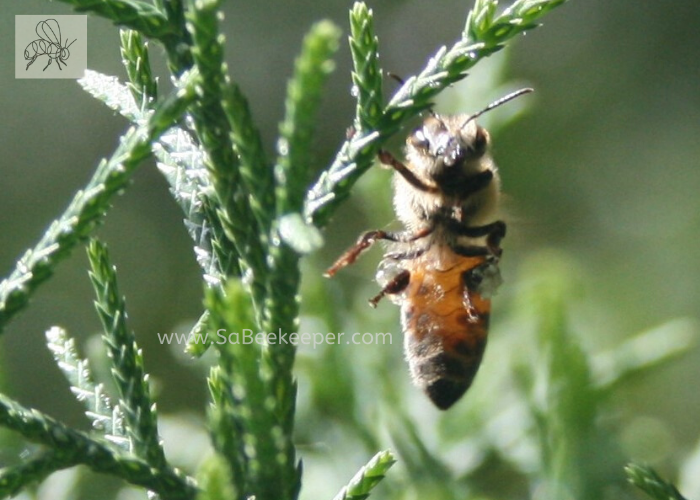
View video slide on this honey bee collecting wax.
Leave a Reply